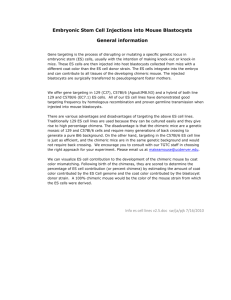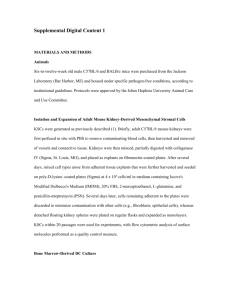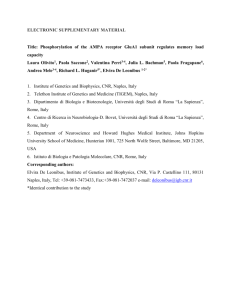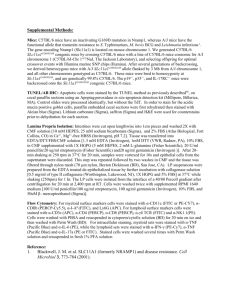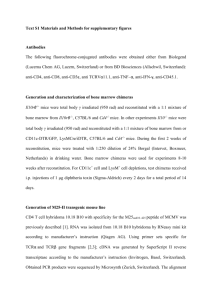THE POUND MOUSE - Charles River Laboratories
advertisement
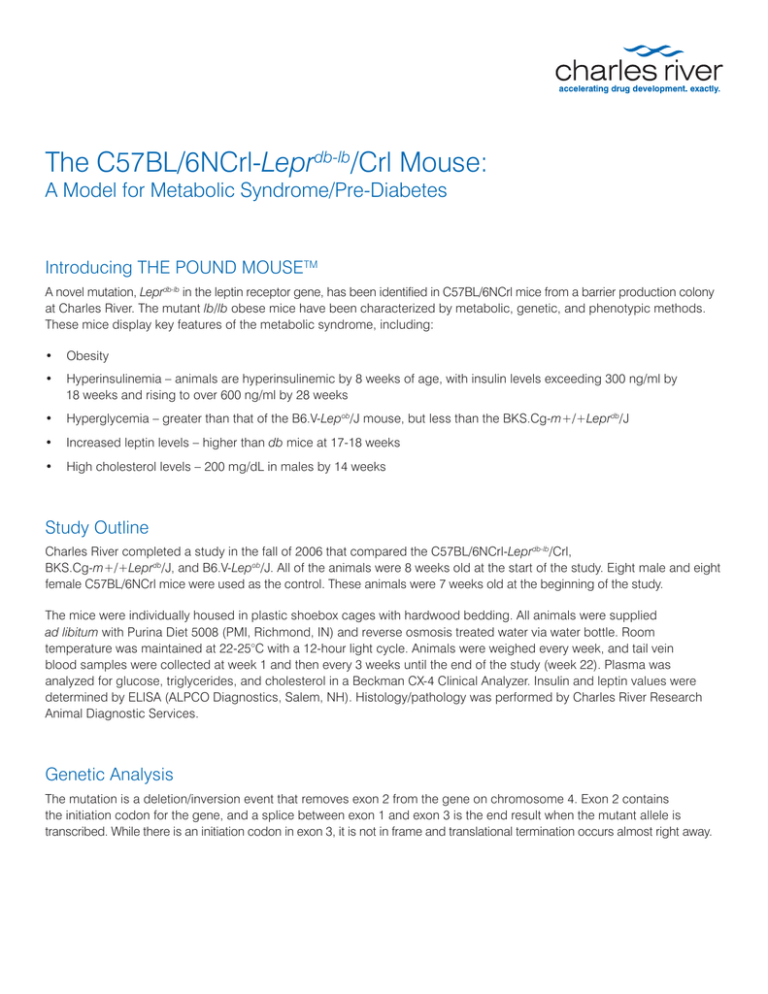
The C57BL/6NCrl-Leprdb-lb/Crl Mouse: A Model for Metabolic Syndrome/Pre-Diabetes Introducing THE POUND MOUSETM A novel mutation, Leprdb-lb in the leptin receptor gene, has been identified in C57BL/6NCrl mice from a barrier production colony at Charles River. The mutant lb/lb obese mice have been characterized by metabolic, genetic, and phenotypic methods. These mice display key features of the metabolic syndrome, including: • Obesity • Hyperinsulinemia – animals are hyperinsulinemic by 8 weeks of age, with insulin levels exceeding 300 ng/ml by 18 weeks and rising to over 600 ng/ml by 28 weeks • Hyperglycemia – greater than that of the B6.V-Lepob/J mouse, but less than the BKS.Cg-m+/+Leprdb/J • Increased leptin levels – higher than db mice at 17-18 weeks • High cholesterol levels – 200 mg/dL in males by 14 weeks Study Outline Charles River completed a study in the fall of 2006 that compared the C57BL/6NCrl-Leprdb-lb/Crl, BKS.Cg-m+/+Leprdb/J, and B6.V-Lepob/J. All of the animals were 8 weeks old at the start of the study. Eight male and eight female C57BL/6NCrl mice were used as the control. These animals were 7 weeks old at the beginning of the study. The mice were individually housed in plastic shoebox cages with hardwood bedding. All animals were supplied ad libitum with Purina Diet 5008 (PMI, Richmond, IN) and reverse osmosis treated water via water bottle. Room temperature was maintained at 22-25°C with a 12-hour light cycle. Animals were weighed every week, and tail vein blood samples were collected at week 1 and then every 3 weeks until the end of the study (week 22). Plasma was analyzed for glucose, triglycerides, and cholesterol in a Beckman CX-4 Clinical Analyzer. Insulin and leptin values were determined by ELISA (ALPCO Diagnostics, Salem, NH). Histology/pathology was performed by Charles River Research Animal Diagnostic Services. Genetic Analysis The mutation is a deletion/inversion event that removes exon 2 from the gene on chromosome 4. Exon 2 contains the initiation codon for the gene, and a splice between exon 1 and exon 3 is the end result when the mutant allele is transcribed. While there is an initiation codon in exon 3, it is not in frame and translational termination occurs almost right away. Weight Values Leptin Values Glucose Values Insulin Values Triglyceride Values Cholesterol Values C57BL/6NCrl C57BL/6NCrl-Leprdb-lb/Crl Figure 1. A comparison of the female C57BL/6NCrl-Leprdb-lb/Crl mouse and a wild-type control mouse (C57BL/6NCrl). Islets in the pancreas of the mutant mouse are much larger, but contain fewer β cells (darkly stained cells) than those in the pancreas from the wild-type mouse. 10x objective. Aldehyde fuchsin stain. C57BL/6NCrl C57BL/6NCrl-Leprdb-lb/Crl Figure 2. Architecture of the C57BL/6NCrl-Leprdb-lb/Crl liver is distorted by a myriad of clear round lipid vacuoles, seen in the inset to fill hepatocellular cytoplasm and force nuclei to the periphery of the cells. The C57BL/6NCrl wild-type liver lacks large round vacuoles, having only the small, irregular clear spaces typical of normal glycogen deposition. As seen in the inset, these do not distort cells and hepatocellular nuclei remain centrally located. 4x objective (insets are 40x), hematoxylin and eosin stain. Conclusion A novel mutation, Leprdb-lb in the leptin receptor gene, has been identified in a C57BL/6NCrl mouse. DNA sequence analysis of the leptin receptor gene has revealed exon 2 is deleted, likely resulting in complete lack of the leptin receptor protein in this line. As expected, histology has shown THE POUND MOUSETM to be a good model for studying liver lipidosis. The liver of male C57BL/6NCrl-Leprdb-lb/Crl mice are characterized by moderate to marked hepatocellular accumulation of lipid, also termed fatty liver and hepatic lipidosis. The degree of lipidosis is similar to that in male B6.V-Lepob/J mice. Hepatocytes are diffusely affected, with large vacuoles often distorting cell outlines and compressing the nucleus to the cell periphery. The C57BL/6NCrl-Leprdb-lb/Crl mutant mice display characteristics found in both B6.V-Lepob/J and BKS.Cg-m+/+Leprdb/J mice. If the Leprdb-lb mutation was placed on the C57BLKS/J background, one would expect the model to become fully diabetic with β cell atrophy and depletion. All of the characteristics mentioned above make THE POUND MOUSETM an appropriate model for researching the metabolic syndrome. Also, the genetic defect in the metabolic syndrome of the mutant mice is expected to facilitate the study of the pathophysiology of the metabolic syndrome/pre-diabetes. © Charles River Laboratories, 2008
